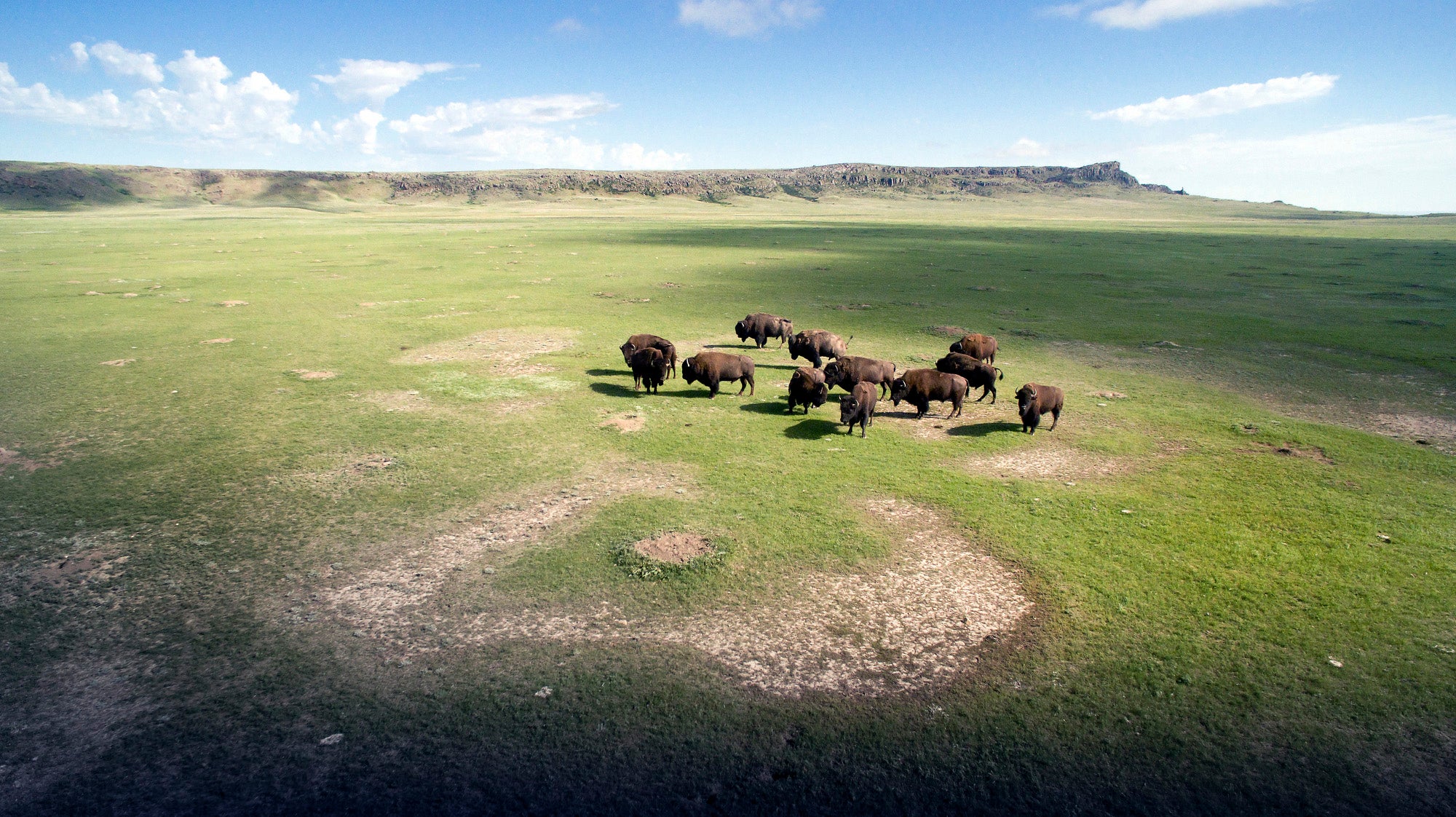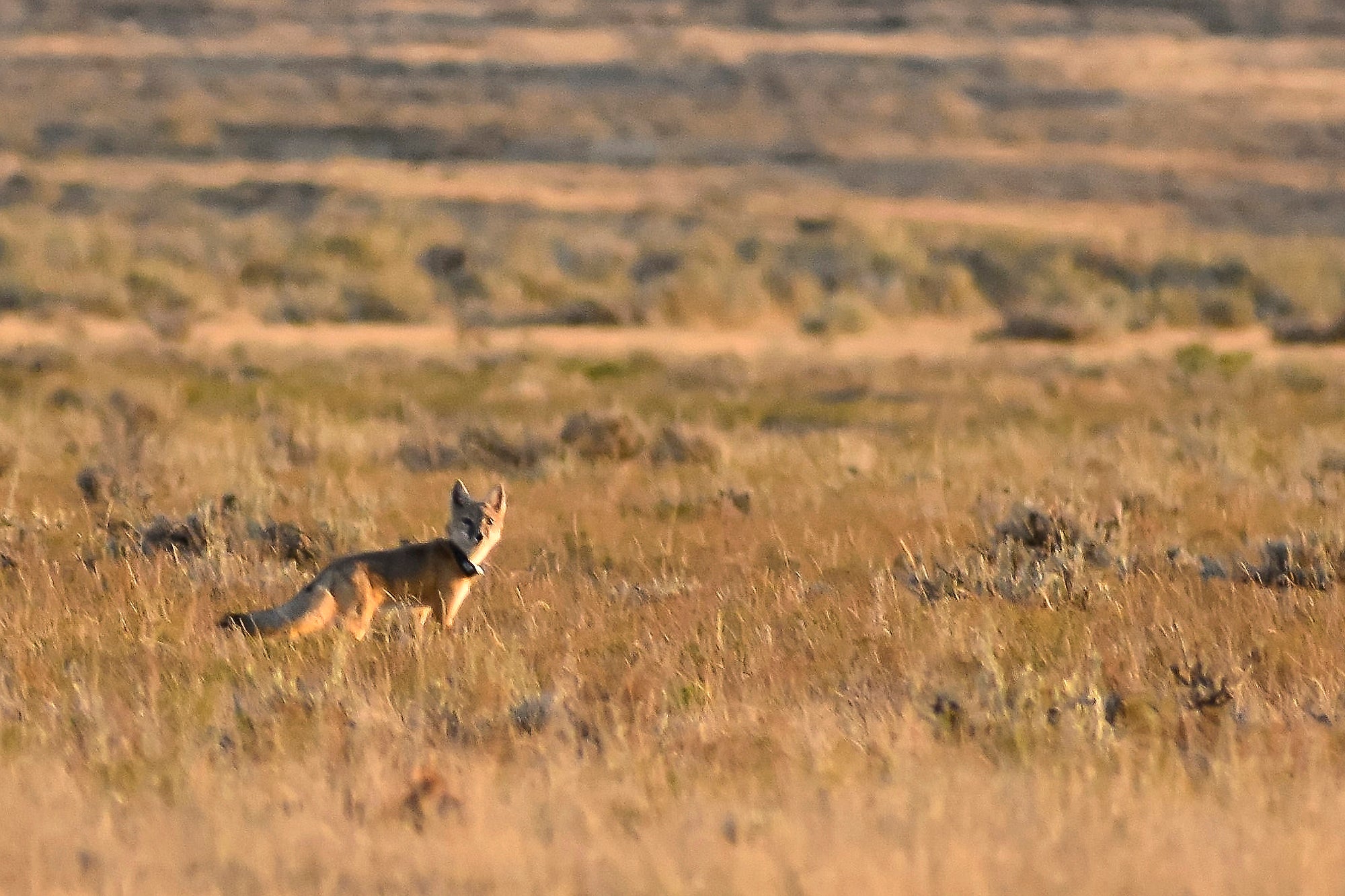In Montana, Wild Bison Are Back, and an Entire Ecosystem Is Healing
The return of bison ten years ago to their home on tribal lands at the Fort Belknap Indian Reservation has helped restore an ecosystem and tribal culture.

This page was published 2 years ago. Find the latest on Earthjustice’s work.
In northern Montana, wild bison graze the prairie, offering a vision of how things once were — and could be again.
Though bison (also called buffalo) are native to this landscape, there were none roaming free here a decade ago. Then a historic court decision cleared the way for the Assiniboine (Nakoda) and Gros Ventre (Aaniiih) Tribes to welcome them back. Thanks to the Tribes’ stewardship — and Earthjustice’s legal defense of the new policy — the bison population has grown from 34 to more than 200. The animals are beginning to revive the landscape and offering an antidote to habitat loss, one of the main drivers of the biodiversity crisis that threatens roughly a million of the Earth’s estimated eight million species with extinction in the coming decades.
The return of bison to their home on tribal lands has helped restore not just an ecosystem, but also tribal culture, says Mark Azure, the former buffalo program manager at the Fort Belknap Indian Reservation and a member of the Nakoda Tribe.
“Two hundred years ago, those animals were taken and removed off the landscape almost to extinction, at the same time tribes were being put on reservations,” explains Azure. “Now look at where we’re at today: For tribes across Indian Country that have buffalo, you’ve got something back that was taken from you, forcefully. That was a huge part of your life as an Indian 200 years ago, and now you have it back. It could be looked at as part of a healing process.”

Mark Azure, photographed in 2013, was the buffalo program manager at the Fort Belknap Indian Reservation. (© WWF-US)
The ecology of the Great Plains was once defined by an estimated 30 million wild American bison that roamed the grasslands in herds of hundreds to thousands. So too was life in the region. For millennia, the animals provided foundation for the lives and cultures of the Plains tribes who relied on a plentiful population of bison for food, shelter, cultural practices, and ceremony.
In the 19th century, white settlers and hunters pushed wild bison close to extinction, bringing the population down from millions to a herd of just 25 in Yellowstone National Park by 1901. It completely devastated Indigenous people whose lives and practices had depended on the bison.
For a century, wild bison were exiled from the Great Plains. Those that overflowed out of the park boundaries as the population grew to almost 5,000 were hunted or shipped off for slaughter.
Then, in the early 2010s, Montana wildlife officials adopted a new policy: They would release a few wild bison on tribal land at the Fort Peck and Fort Belknap Reservations in northern Montana, which were eager to welcome them. Ranchers immediately challenged the move, temporarily shutting down the program before Fort Belknap could receive bison. Earthjustice stepped in to defend the decision to bring bison back — and in 2013, following a landmark Montana Supreme Court ruling, approximately 30 wild bison were transferred to the Fort Belknap Reservation.
“The idea here at Fort Belknap has always been to just let them be buffalo,” says Azure.
The Tribe’s policy, he explains, is to gather the animals just once a year to determine how many there are, how many to sell, and predict how many calves they may have for the coming year. Then, they let the bison roam free.
Azure notes that, while the bison population is still nowhere close to the numbers of centuries past, the animals are abundant enough to sustain the Tribes economically. The bison can be sold to generate revenue for the Tribal government, as well as used for food and ceremonial purposes.
Because the land that the bison roam at Fort Belknap sits next to a highway running north and south through the reservation, non-Tribal members also get to see the bison and the result of the Tribe’s stewardship.

Some of 34 genetically pure bison run down a ramp as they are released onto a 1,000-acre pasture on the Fort Belknap Indian Reservation in 2013. (Rion Sanders / The Great Falls Tribune via AP)
As bison thrive in northern Montana, their presence has had rippling ecological effects. As the bison rotate through the 24,000-acre pasture on the Fort Belknap Indian Reservation, they till the ground and transfer seeds ensnared in their hair that can plant blooms of wildflowers and new grass, attracting pollinators. Bison grazing also creates ideal nesting habitats for birds, while their heavy stomping packs down soil to create wallows that capture water and attract amphibians.
Bison dramatically transform a landscape. Azure tells the story of a delighted bird expert who, while touring the reservation’s bison pasture several years ago, heard the chirping of the imperiled Sprague’s Pipit. The specialist explained that the way the bison ate and rotated had created high enough quality grass to have supported a nesting place for the bird.
Two other native species have returned to Fort Belknap as well: the endangered black-footed ferret and the swift fox.
“They’re back on the landscape here, and they’re thriving,” Azure says.

A swift fox is seen moments after being released onto the Fort Belknap Indian Reservation in Montana. (Matthew Brown / AP)
As happened with the bison two centuries ago, exploitation and extraction are threatening to unravel entire webs of life. Scientific projections show that 40% of all species may face extinction by the end of this century. Their disappearance threatens to upend entire ecosystems and the communities and cultures that depend on them.
But, as the story of the American bison has shown, if we adhere to science and take the urgent action it calls for to protect and restore vulnerable species and habitats, it is not too late to turn things around.
Azure notes that it was this utilization of science and facts that won the historic Montana Supreme Court case in 2013 that resulted in the return of the bison to the northern Montana Tribes.
Recently, Azure flew back to his home in Montana from Sacramento, where he had been a panelist for a new documentary on bison from Ken Burns, “The American Buffalo,” which recently premiered on PBS. It’s this renewed passion for American bison that is offering him hope today.
“I was sitting [on the flight] thinking, man, this is awesome. To me, there’s a resurgence of interest,” he says.
There’s not just interest, but also financial support from several nonprofits working to restore bison and from the Biden administration, which recently set aside funding specifically for the species.
And other tribes are trying to bring bison back to their lands as well, says Azure, noting the work of the Intertribal Buffalo Council, a council of 80 tribes whose mission is to restore bison to Indian Country.
“Still here, still trying to get what was taken. So, we’re all open to the idea of putting buffalo back on the landscape,” says Azure. “That’s my hope, it’s coming true. I think this is going to carry us into the future as long as we do this in a positive, scientific way.”
Earthjustice uses the power of the law to protect biodiversity — and we represent our clients for free, because no creature should have to pay for its right to a healthy environment. Our work depends on supporters like you.
Established in 1993, Earthjustice's Northern Rockies Office, located in Bozeman, Mont., protects the region's irreplaceable natural resources by safeguarding sensitive wildlife species and their habitats and challenging harmful coal and industrial gas developments.